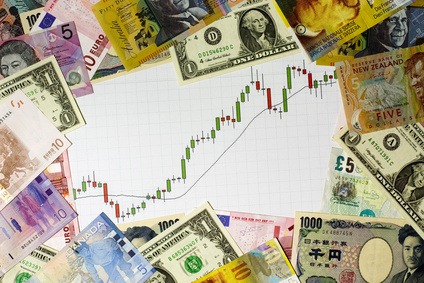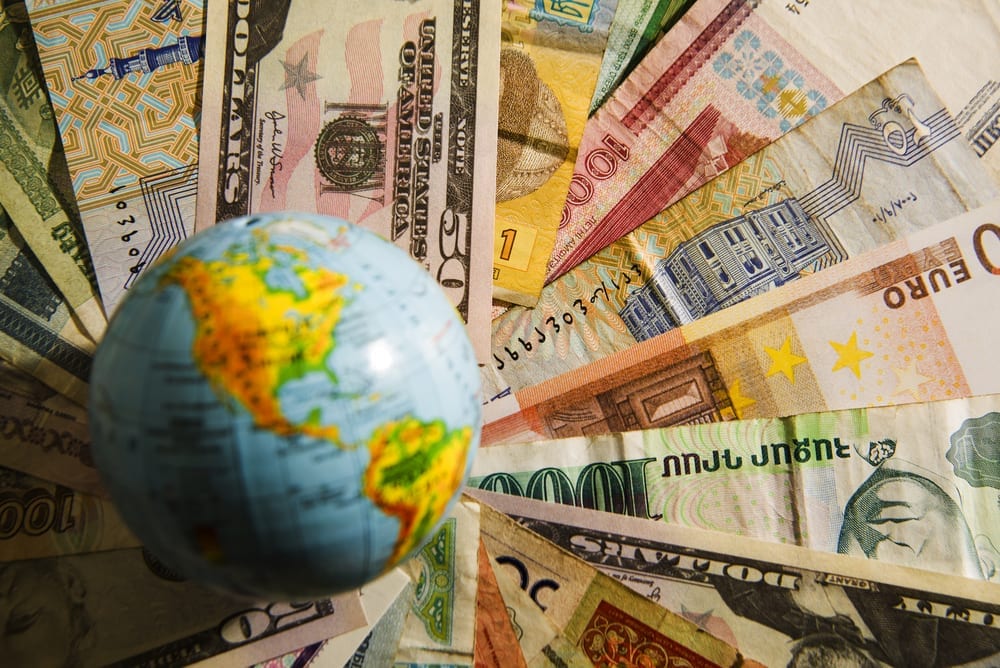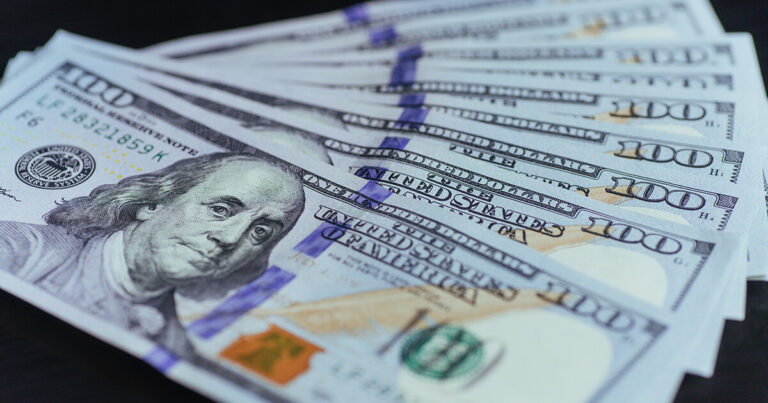
What an exciting week for risk assets as surprises left the king dollar in the red. In forex most volatile news, key central banks’ decisions influenced the market, and US economic data ignited the market on Friday!
Euro topped the list, followed by Australian and New Zealand Dollars. Despite the US dollar’s robust performance on Friday, it still ended as the worst performer of the week. Japanese yen and Canadian dollars followed closely behind.
Notably, the risk assets rallied against US dollar most days of the week, but the dollar recouped most of the losses on Friday.
Let’s start with the fundamentals that drove the market.
Forex Most Volatile News, Fundamentals

This week, economic updates and central banks policies overshadowed geopolitics and Omicron concerns to uplift risk assets.
Economic Updates
While G7 nations released economic updates over the week, US data on Friday stole the show. The US dollar recovered some losses after news hit the forex market that the world’s largest economy created many jobs, in fact much better than expected. This raises the odds for a significant rate hike at the March policy meeting.
In January, nonfarm payrolls rose by 467 thousand, tripling expectations of 150 thousand. In addition, revised figures for the labor market added to the euphoria. Data show the US created 510 thousand jobs in December and not 199 thousand.
In addition to the upbeat economic data, earnings also moved the market. Most global giants led by Amazon released strong earnings creating an appetite for the risk assets.
Central Bank Surprises
EUR/USD and GBP/USD rallied midweek on hawkish statements from ECB and BoE. BoE rates increased to 0.5 percent, and ECB indicated it would reverse its dovish outlook this year.
But Australia’s Reserve Bank still maintained an ultra-loose policy, despite inflationary pressure and a 50-year unemployment rate. Likewise, Bank of Japan ignored market pressure to raise interest rates.
Forex Crude Oil News
The price of oil rose for the seventh week in a row. Forex crude oil news reports global political turmoils and supply disruptions fueled the price surge to a seven-year high. For the week, crude oil price touched above 90 dollars per barrel.
Politics
The tension between America and Russia escalated over Ukraine. Russia does not want Ukraine to join NATO. This is because if Ukraine joins Nato, its security could be compromised.
Boris Johnson, Britain’s Prime Minister, received renewed calls to resign. The opposition wants him to step aside for breaking lockdown rules. However, Boris has the backing of his party, and he could survive.
But traders focused on other forex most volatile news as the politics had a negligible impact on the market.
Omicron Concern
Although omicron variant surges continue, it did not warrant space in the forex most volatile news. And as it turns out, the omicron variant had little impact on the economic activities in the G7 nations and globally.
Labor market and economic activity will soon pick up as member states ease COVID 19 restrictions.
G7 Economic Review and Fundamental Analysis
Table: g7 currencies performance summary
| Currency pair | 29th Jan 2022 | 4th Feb 2022 | Average price | Percentage change | Remarks |
| USD | 96.537 | 95.480 | 95.941 | 1.836 | drop |
| GBPUSD | 1.3445 | 1.3529 | 1.3533 | 0.9326 | increase |
| EURUSD | 1.1233 | 1.1449 | 1.1338 | 2.2746 | increase |
| USDCHF | 0.9269 | 0.9254 | 0.9223 | 0.5695 | drop |
| USDJPY | 115.10 | 115.21 | 114.88 | 0.02 | drop |
| USDCAD | 1.2705 | 1.2694 | 1.2700 | 0.0235 | drop |
| AUDUSD | 0.7064 | 0.7076 | 0.7108 | 1.2883 | increase |
| NZDUSD | 0.6574 | 0.6619 | 0.6623 | 1.3009 | increase |
US Dollar News
After two weeks of gains, the Greenback fell back into the red. The Dollar Spot Index fell by 1.836 percent to close below the 96 levels in the week. The fall came after a previous strong rally of 1.70 percent to 97.270.
Production index and nonfarm payrolls weighed on the US dollar news earlier in the week. It was poor, with nonfarm payrolls dropping 301 thousand and the ISM production index tumbling to 57.6 from 58.8.
On Thursday, mixed economic data failed to provide proper direction for the Greenback. In a positive tone, initial jobless claims declined to 238 thousand from 261 thousand. But the service sector disappointed, with its index falling to 59.9 from 62.3.
On Friday, January’s nonfarm payroll data dominated forex most volatile news of the week. Nonfarm payroll continues to rise. It rose by 467 thousand following a 510 thousand surge in December.
But despite the increase, the unemployment rate edged higher to four percent from 3.9 percent, with the participation rate climbing to 62.2 percent from 61.9 percent. Also, a hawkish monetary statement from BoE and ECB weakened the US dollar mid-week.
UK Forex News
Sterling Pound increased 0.9326 percent to 1.3531 against the dollar this week. Previously, it fell by 1.12 percent to 1.3401. The UK released sparse economic data, which provided little support for the pound.
However, according to UK forex news, service sector index rose to 54.1 from 53.6, and manufacturing index fell to 57.3 from 57.9. The positive data pushed composite index to 54.2 from 53.6.
While the economic data supported the pound, BoE monetary decisions increased it. As expected, BoE hiked rates by 25 basis points to a half percent.
Eur Forex News
It was a blazing week for the euro. After a 1.70 percent drop in the previous week, the euro gained 2.7461 percent to 1.1449 this week. Both economic data and monetary policy uplifted the euro.
According to eur forex news, inflation data, retail sales, and factory orders uplifted the euro. Inflationary pressure continues to defy ECB’s transitory view as inflation rose further from 5.0 percent to 5.1 percent.
Private sector, however, had mixed figures for the euro. While service sector index declined to 51.1 from 53.1, manufacturing numbers cranked to 58.7 from 58.0. Moreover, euro forex news shows Omicron strain weighed on the service sector.
Germany’s economy also boosted the euro as factory orders increased and unemployment rate dropped enormously. While the economy boosted the euro, a hawkish ECB sent it soaring to 1.14 levels in the week.
US Dollar To Franc
In the first week of February, the Swiss franc gained 0,5695 percent to close at 0.9254 against the dollar. Economic data on Friday significantly influenced us dollar to franc exchange rate.
The Swiss franc gained enormously against the dollar between Monday and Wednesday. But robust economic data at the end of the week saved the Greenback. Swiss Economic barometer KOF rose to 107.8 from 107.2, beating market expectations of 106.0.
Dollar To Loonie
Canadian dollar gained 0.0235 percent to 1.2764 against the Greenback during the week. In the previous week, it fell by 1.50 percent. Canada posted negative economic data, which weighed the US dollar to loonie exchange rate.
Employment records show Canada lost 200 thousand jobs. Due to the unprecedented job losses, unemployment rate rose to 6.5 percent from six percent. Previously, Canada had created 78.6 thousand new jobs.
While the economic data weighed on the loonie, a blistering rise in oil prices significantly boosted it.
Forex Most Volatile News in Asia-Pacific Region

Bulls steered Aussie and Kiwi dollars to the green pastures in the Asia-Pacific region. But Yen, a haven currency, had a tough week.
Aussie Forex News
For the week, Aussie dollar appreciated by 1.20 percent to 0,7072. Australia’s retail sales tumbled by 4.4 percent, the highest since 2020. However, improved business confidence was the only positive data in the Aussie forex news.
RBA meeting on Wednesday weighed on the Aussie dollar. The bank ended bond purchasing program, citing a pickup in inflationary pressure and better than expected employment rate. As for interest rates, RBA held back on hikes, reversing some gains made in the week.
According to investing.com, Aussie dollar rallied between Monday and Thursday but weakened on Friday as US posted massive job gains.
USD NZD Rate
Kiwi Dollar rallied by 1.30% to close at 0.6633 against the Greenback. New Zealand’s positive economic data uplifted usd nzd rate. One, unemployment rate declined from 3.3 percent to 3.2 percent. Two, trade deficit narrowed to 477 million from 1.060 billion New Zealand dollars.
US Dollar vs Yen
The Japanese Yen closed the week slightly higher by 0.02 percent to 115.260 against the Greenback. In the week before, it had fallen by 1.39 percent to 115.260. Poor economic data from Japan influenced US dollar vs yen exchange rate. Both service and industrial data contracted, weighing on the Yen.
Retail sales failed to hit economists’ projection of a 2.7 percent jump. Instead, the sales rose only by 1.4 percent, following a previous 1.9 percent rise. Investing.com data shows that the US dollar lost against the Yen most of the week only to regain on Friday.
Week Ahead
Forex volatile news highlights of the coming week include:
- Economic updates
- Boris Johnson political uncertainty
- Russia-Ukraine crisis
After sizzling forex most volatile news driven by key central banks and economic updates, headlines may slow down a bit. However, the forex market is still vibrant. And forex traders expect inflation and inflation updates to drive the forex market next week.
Have a wonderful week!




